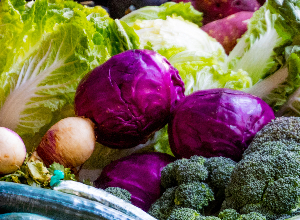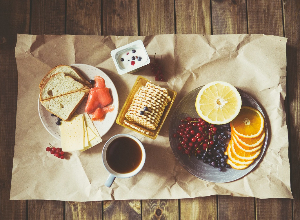Best vegetables for diabetes
Published Jan 30, 2019 • Updated Nov 8, 2019 • By Louise Bollecker
People with diabetes often feel left out at big family meals and at restaurants, but it should not mean having to avoid delicious food.
In fact, no food item is strictly forbidden for people with diabetes. Healthy eating for people with diabetes is all about moderation and balance. The best vegetables for diabetes are low on the glycemic index (GI) scale, rich in fiber, or high in blood pressure-lowering nitrates.

Why choose vegetables?
When considering foods to avoid, many people with diabetes might think about sugary or high-carbohydrate foods, such as cinnamon rolls or bread. Certain vegetables, though, can also cause blood glucose problems.
The GI refers to how quickly foods cause blood sugar levels to rise. Foods high on the GI, such as most potatoes, rapidly release glucose, potentially triggering blood glucose spikes. They can also cause weight gain when eaten in excess. Low to moderate GI vegetables, such as carrots, offer better blood glucose control, and a lower risk of weight gain.
Nitrates are chemicals that naturally occur in some vegetables. They are also used as preservatives in some foods. Eating nitrate-rich foods, not foods processed with added nitrates, can lower blood pressure, and improve overall circulatory health. This means that nitrate-rich foods, such as beets, are among the best vegetables for people with diabetes who have a higher risk of cardiovascular disease. This is still true despite their high level of carbohydrates.
The key to good food management, in this instance, is to reduce carbohydrate consumption elsewhere, such as by eliminating bread or sugary snacks.
Fiber and protein are both very important in a healthful diabetes diet. Protein is vital for good health, and can help people feel fuller for longer, reducing the urge to snack and supporting weight loss. Many dark, leafy greens are rich in many vital nutrients, fiber, and contain protein. Fiber can help control blood glucose levels. It also supports healthy cholesterol levels, can lower blood pressure, and relieve constipation. Like protein, fiber can help people feel fuller for longer. Many fruits and vegetables, nuts, and legumes are rich in fiber.
Best vegetables for diabetes
Eating a wide variety of foods, including a mix of the best vegetables for diabetes, can help people stay healthy while enjoying a range of meals.
Low GI: Vegetables, with GI scores less than 30, include:
artichoke
asparagus
broccoli
cauliflower
green beans
lettuce
eggplant
peppers
snow peas
spinach
celery
It is worth remembering that the GI gives a relative value to each food item, and it does not refer to an amount of sugar. The glycemic load (GL) refers to how much a person will eat in a serving.
Nitrates: Vegetables rich in nitrates include:
arugula
beets and beet juice
lettuce
celery
rhubarb
Protein: Daily protein recommendations depend on a person's size, sex, activity level, and other factors. People should speak to a doctor for the best insight on what their ideal daily protein intake is. Pregnant or lactating women, highly active people, and those with large bodies need more protein than others.
Vegetables higher in protein include:
spinach
bok choy
asparagus
mustard greens
broccoli
Brussels sprouts
cauliflower
Fiber: Most people need 25-38 grams (g) of fiber each day.
Fiber should come from real food, not supplements. Vegetables and fruits with high fiber content include:
carrots
beets
broccoli
artichoke
Brussels sprouts
split peas
avocados
Eating a vegan or vegetarian diet can prove challenging for people with diabetes. Animal products are generally the most protein-rich options, but vegans avoid dairy and other animal products. Some of the best vegan protein-rich options include:
lentils
beans and chickpeas
peas
almonds
pumpkin seeds
amaranth and quinoa
sprouted grain bread
soy milk
A vegan or vegetarian person who has diabetes can eat a balanced diet. Nuts, seeds, and lentils offer high protein, often with few calories.
_________________________
Have you changed your intake of vegetables since you were diagnosed with diabetes? Did you eat a lot of vegetables before being diagnosed?
What are your favorite vegetables and how to you consume them - raw, stewed, fried?
MedicalNewsToday.com
7 comments
You will also like

Fighting Schizophrenia Symptoms: a Long Journey Against Paranoia after Denial and being Admitted
Dec 12, 2018 • 6 comments

 Facebook
Facebook Twitter
Twitter



